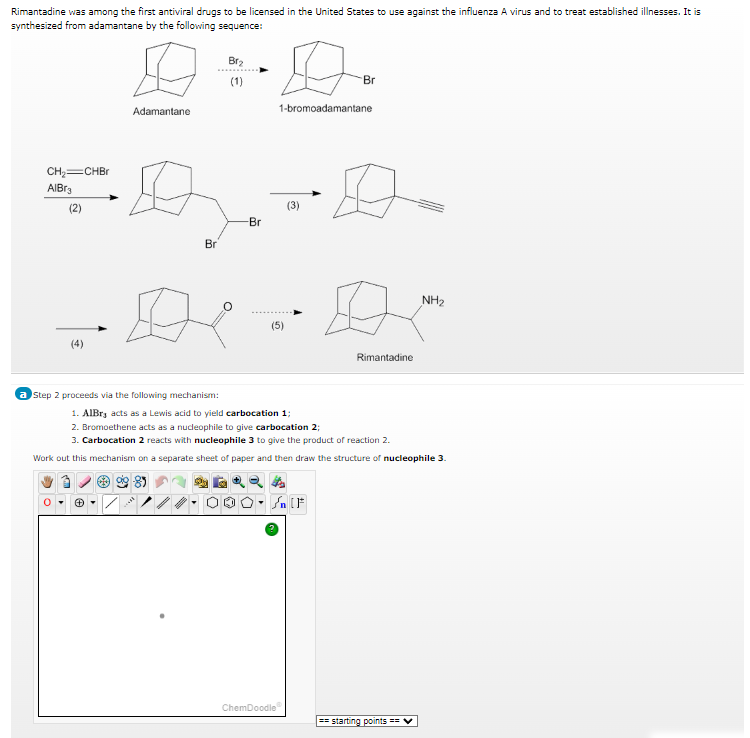Rimantadine was among the first antiviral drugs to be licensed in the United States to use against the influenza A virus and to treat established illnesses. It is synthesized from adamantane by the following sequence:
Rimantadine was among the first antiviral drugs to be licensed in the United States to use against the influenza A virus and to treat established illnesses. It is synthesized from adamantane by the following sequence:
Chapter21: Carboxylic Acid Derivatives: Nucleophilic Acyl Substitution Reactions
Section21.SE: Something Extra
Problem 60AP
Related questions
Question
What is the structure of nucleophile 3? Thank you.

Transcribed Image Text:Rimantadine was among the first antiviral drugs to be licensed in the United States to use against the influenza A virus and to treat established illnesses. It is
synthesized from adamantane by the following sequence:
CH₂=CHBr
AlBr3
(2)
Adamantane
=D₂.-6.
(3)
-Br
Br
(4)
Ø
Br₂
(1)
a Step 2 proceeds via the following mechanism:
1-bromoadamantane
(5)
Br
SnF
ChemDoodle
Rimantadine
1. AlBr, acts as a Lewis acid to yield carbocation 1;
2. Bromoethene acts as a nucleophile to give carbocation 2;
3. Carbocation 2 reacts with nucleophile 3 to give the product of reaction 2.
Work out this mechanism on a separate sheet of paper and then draw the structure of nucleophile 3.
NH₂
==starting points == ✔
Expert Solution
This question has been solved!
Explore an expertly crafted, step-by-step solution for a thorough understanding of key concepts.
Step by step
Solved in 2 steps with 2 images

Knowledge Booster
Learn more about
Need a deep-dive on the concept behind this application? Look no further. Learn more about this topic, chemistry and related others by exploring similar questions and additional content below.Recommended textbooks for you


Organic Chemistry
Chemistry
ISBN:
9781305580350
Author:
William H. Brown, Brent L. Iverson, Eric Anslyn, Christopher S. Foote
Publisher:
Cengage Learning


Organic Chemistry
Chemistry
ISBN:
9781305580350
Author:
William H. Brown, Brent L. Iverson, Eric Anslyn, Christopher S. Foote
Publisher:
Cengage Learning